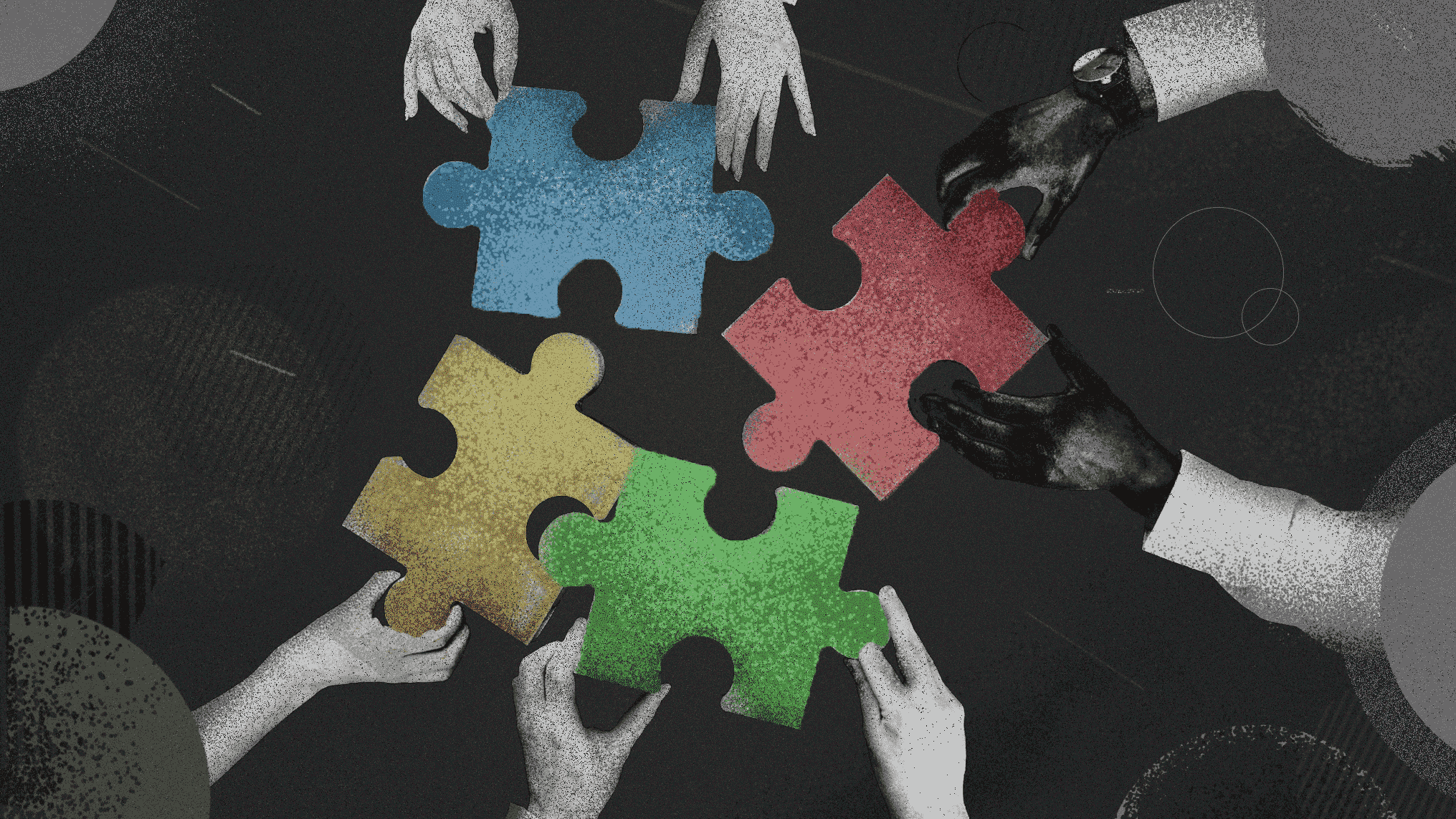In today’s fast-paced and highly competitive business environment, the success of any organization heavily relies on collaboration and synergy between different departments. By fostering effective communication and cooperation between departments, organizations can unlock new opportunities for growth and development. This is something that we here at Pipeliner practice ourselves.
Additionally, when departments work together seamlessly, it not only enhances productivity but also encourages the exchange of ideas, leading to innovation and creative problem-solving. Furthermore, a strong sense of teamwork and collaboration creates a harmonious work culture where employees feel supported and valued, ultimately driving success and achieving organizational goals.

Benefits
Exchange of knowledge
One of the key benefits of departments working together is the exchange of knowledge and expertise. This exchange of knowledge and expertise is crucial as it allows departments to tap into a wider pool of skills, experiences, and perspectives. Each department brings its own unique set of skills, experiences, and perspectives to the table, which enriches the overall collaborative effort.
By collaborating and sharing their knowledge, departments can not only solve complex problems more efficiently but also explore new possibilities and come up with innovative solutions. This collaborative exchange of ideas and expertise not only strengthens the individual departments but also fosters a deeper understanding of the business as a whole. Furthermore, it opens up opportunities for the development of cutting-edge strategies and approaches that may have previously been unexplored.
Effective collaboration
Effective collaboration between departments is essential for breaking down silos and promoting cross-functional teamwork. It not only encourages employees from different departments to work together on projects but also helps them gain a deeper understanding of each other’s roles and responsibilities. This fosters mutual respect, appreciation, and a stronger sense of unity within the organization.
Moreover, collaboration between departments plays a crucial role in improving communication and coordination. By breaking down barriers and facilitating regular interactions, departments can work seamlessly towards common goals. This enhances information sharing, reduces misunderstandings, and ensures that everyone is on the same page.
In addition to these benefits, collaboration also brings about better resource allocation and utilization. When departments collaborate, they can identify and leverage shared resources, resulting in reduced duplication of efforts and optimized use of available resources. This not only leads to cost savings but also enables a more efficient allocation of time, money, and personnel.
Furthermore, when departments work together, they can harness their collective resources and expertise to develop more effective and streamlined processes. This leads to increased productivity and overall organizational efficiency. By eliminating redundant tasks and leveraging the diverse skills and knowledge across departments, the organization can achieve better outcomes and deliver value to its stakeholders.
In conclusion, effective collaboration between departments is crucial for breaking down barriers, improving communication, and optimizing resource allocation. It fosters a sense of unity, enhances productivity, and enables the organization to work towards common goals more effectively.
Innovation
Collaboration is not only essential for effective teamwork but also plays a crucial role in fostering a culture of innovation within organizations. It is through collaboration that individuals from different departments and teams come together to work on projects, leveraging their diverse perspectives, skills, and ideas. This diversity of thought and expertise acts as a catalyst, igniting the sparks of creativity and driving organizations to stay ahead of the curve. By encouraging collaboration, organizations can tap into the collective intelligence of their employees and harness the power of teamwork to tackle complex challenges and achieve remarkable results.
Collaboration also promotes a sense of belonging and camaraderie among team members, fostering a supportive work environment. Moreover, when individuals collaborate, they not only exchange knowledge and expertise but also learn from one another, expanding their horizons and enhancing their professional growth. In this way, collaboration not only enhances the quality and efficiency of work but also nurtures a culture of continuous learning and improvement. Therefore, organizations should prioritize and actively encourage collaboration among their employees to unlock the full potential of their workforce and drive innovation and success.
By encouraging collaboration, organizations create an environment that nurtures innovation and enables the development of new products, processes, and strategies. The synergy created by the collective intelligence and collaboration of individuals from various backgrounds and disciplines leads to breakthroughs and novel solutions that might not have been possible otherwise.
Moreover, collaboration encourages employees to think outside the box and embrace change. It fosters a mindset that values continuous improvement and growth. When employees are encouraged to share ideas freely and engage in open discussions, it creates a culture where innovation thrives. This not only benefits the organization but also empowers employees to contribute their unique perspectives and insights.
Collaboration is a powerful driver of innovation. By fostering a collaborative environment where ideas are freely shared and valued, organizations tap into the full potential of their workforce and unleash a wave of innovation that permeates throughout the entire organization.
How to achieve successful collaboration
Successful collaboration between departments does not happen automatically. It requires effective leadership, clear communication channels, and a supportive organizational culture. Effective leadership plays a crucial role in fostering collaboration between departments. A strong leader sets the tone for collaboration by promoting open communication, trust, and mutual respect among team members. They create an environment where individuals feel empowered to share their ideas and opinions without fear of judgment or retribution.
One key characteristic of effective leadership in promoting collaboration is active engagement. Leaders actively participate in cross-departmental discussions, demonstrating their commitment to collaboration and encouraging others to do the same. They facilitate brainstorming sessions, encourage different perspectives, and ensure that every team member has a voice.
By actively engaging in collaboration, leaders set an example for others and inspire a culture of participation and teamwork.
Another important aspect of effective leadership in fostering collaboration is providing clear direction and purpose. Leaders articulate the vision and goals of the organization, ensuring that all departments understand how their individual efforts contribute to the overall success. They create alignment between departments by establishing common objectives and encouraging collaboration toward shared outcomes. This clarity of purpose helps break down silos and promotes a collective mindset focused on achieving organizational goals.
Furthermore, effective leaders create a safe and supportive environment for collaboration. They encourage risk-taking and innovation by assuring team members that their ideas are valued and that failure is seen as an opportunity for growth. They provide constructive feedback and recognition for collaborative efforts, reinforcing the importance of collaboration and motivating teams to continue working together effectively.
In addition, effective leaders prioritize building strong relationships among team members. They promote trust and camaraderie by fostering a culture of respect. They encourage cross-functional interactions, team-building activities, and social events that allow individuals from different departments to connect on a personal level. These relationships form the foundation for effective collaboration, as team members are more likely to share ideas and support one another when they have established trust and rapport.
Moreover, effective leaders actively seek opportunities to develop and enhance the collaboration skills of their teams. They provide resources and training programs to improve communication, teamwork, and conflict-resolution skills. They encourage cross-departmental learning and knowledge sharing through mentorship programs, job rotations, and collaborative projects. By investing in the professional development of their teams, leaders equip them with the necessary skills and mindset to collaborate effectively.
Effective leadership is a critical factor in fostering collaboration between departments. Leaders who actively engage, provide clear direction, create a supportive environment, build strong relationships, and invest in collaboration skills development can unlock the full potential of their teams. By promoting a culture of collaboration and teamwork, leaders contribute to the overall success and growth of the organization.
Additionally, organizations must invest in building a collaborative culture by promoting a sense of shared purpose and values, encouraging innovation and creativity, and fostering a sense of belonging among employees. Providing comprehensive training programs and resources to support cross-departmental collaboration is also essential. Moreover, creating platforms for employees to connect and collaborate, such as online forums, team-building activities, and cross-functional projects, can further enhance collaboration and strengthen relationships among team members.
By implementing these strategies, organizations can cultivate a collaborative environment that drives innovation, boosts productivity, and leads to overall success. In addition, it is important for organizations to establish regular communication channels and feedback mechanisms to ensure that collaboration efforts are continuously monitored and improved upon. Furthermore, fostering a culture of trust and transparency can create an environment where employees feel safe to share their ideas and opinions, leading to more meaningful collaboration.
Organizations can also consider implementing mentorship programs and cross-departmental job rotations to encourage knowledge sharing and cross-pollination of ideas. Moreover, recognizing and celebrating successful collaboration through awards and incentives can motivate employees to actively participate in collaborative initiatives. Lastly, organizations should regularly assess and evaluate the effectiveness of their collaboration strategies and make necessary adjustments to ensure continuous improvement. By taking a comprehensive approach to collaboration, organizations can create a vibrant and dynamic work environment that drives success and innovation.
Conclusion
Collaboration between different departments in the workplace is not just beneficial but essential for the success and growth of an organization. It promotes knowledge sharing, breaks down silos, optimizes resource allocation, and fosters innovation. Additionally, effective collaboration between departments allows for improved communication, increased cross-functional understanding, and enhanced problem-solving capabilities. This collaborative work environment cultivates a sense of unity and teamwork, leading to higher employee satisfaction and engagement.
Furthermore, by encouraging collaboration, organizations also create opportunities for employees to learn from one another, develop new skills, and expand their professional networks. This continuous learning and growth contribute to the overall development and success of both individuals and the organization as a whole. Therefore, embracing and nurturing collaboration between departments is not only a strategic advantage, but also a catalyst for organizational development, increased productivity, efficiency, and long-term success. By leveraging the collective expertise, ideas, and talents of different departments, organizations can propel themselves toward a brighter and more successful future.

